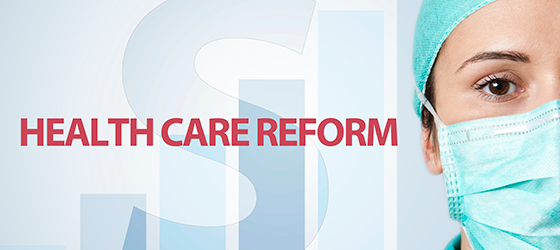Easing MACRA’s Quality Payment Program Transition

As the highly anticipated Quality Payment Program—a result of the Medicare Access and CHIP Reauthorization Act of 2015 (MACRA)—rollout begins, so does the search for solutions for easing the transition.
Although MACRA’s enactment and the corresponding transition to the Quality Payment Program offer significant advantages to many U.S. healthcare facilities, it may also represent a costly shift in existing infrastructure for others. This is especially true for hospitals that are not equipped to track the necessary metrics for one of the Quality Payment Program’s payment tracks.
What is MACRA and the Quality Payment Program?
Drafted by the Centers for Medicare and Medicaid Services (CMS) as an alternative to traditional payment and reimbursement policies, MACRA is an extremely complex piece of legislation that seeks to accomplish the weighty task of implementing value-based care.
While perhaps too lengthy to read in full for most busy healthcare professionals (the document itself is more than 2,000 pages), understanding its fundamentals is crucial for any healthcare facility that provides treatment for Medicare and Medicaid patients.
Most simply, MACRA is an incentive-based payment system to be associated with Medicare services. Physicians will no longer utilize the fee-for-service model or the Medicare Sustainable Growth Rate formula (SGR) that has been used since 1997 to calculate payment.
Instead, they may now choose from two new payment tracks—which, when used in conjunction, can better achieve a results-oriented method:
• Merit-based Incentive Payment System (MIPS): In an effort to accomplish a truly effective merit-based model, MIPS consolidates three existing quality considerations (i.e., meaningful use, Physician Quality Reporting System, and Value-based Payment Modifier) with a new evaluation method: clinical practice improvement activities. These criteria are then used to determine a score from 0–100 that can be applied to physician payments.
• Alternative Payment Model (APM): A secondary method, APM is designed to further enhance what MIPS is able to accomplish by offering practitioner bonuses for continued excellence. Exact practices vary from one facility to the next, but qualifying participants must meet certain requirements, including:
• Use of certified EHRs
• Payments under an approved quality-based system
• Services that assume more than a nominal risk of losses
MACRA is also designed to replace three existing quality reporting systems with a more streamlined and effective alternative. Although this is intended to reduce clinical administrative burdens in the long run, it may require a better approach to patient management in the interim.
Sequence Patient Tracking System: A Solution for Reducing MACRA Admin Burdens
The Sequence Patient Tracking System can ease your healthcare facility’s transition to the Quality Payment Program tracking patients from first contact to recovery. By collecting and consolidating all necessary information through a HIPAA-compliant platform, our lead and patient tracking solutions enable you to manage patient leads, streamline patient intake, and organize patient information.
If your facility seeks proven, qualified guidance and support to successfully participate in the MACRA rollout, please contact Sequence Health to learn about our solutions.





